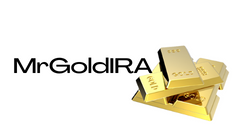The Comparison Between Bitcoin and Gold
Many commentators compare Bitcoin with gold, suggesting that Bitcoin's finite supply makes it an attractive long-term store of value. Gold has historically been widely adopted as a currency, with examples such as the British Empire's sovereign and half-sovereign. However, it's important to note that the adoption of gold currencies was often driven by the British imperial government, unlike Bitcoin which has no nation state to promote its adoption. Therefore, the comparison between Bitcoin and gold sovereigns is not entirely accurate. Instead, we can draw a better comparison between Bitcoin and the Spanish silver dollar.
The Success of the Spanish Silver Dollar
The Spanish silver dollar, also known as the reale, thrived as a trade currency despite the decline of Spain, its nation of origin. Unlike other currencies, the reale was adopted in countries that were never Spanish colonies, challenging the notion that a currency can only succeed with a strong home country promoting its use. Three main factors contributed to the reale's success: availability, quality, and verifiability.
The Creation and Division of the Reale
The reale was created in 1497 when King Ferdinand and Queen Isabella reformed Spain's monetary system. It could be divided into eight parts, hence the term "pieces of eight". It's important to note that the reale should not be confused with "doubloons," which were made from gold.
The Discovery of the Richest Source of Silver
In 1545, the Spanish discovered the Cerro de Potosi in present-day Bolivia, which became the richest source of silver in history. The shortage of coins led to the Spanish crown permitting the minting of reales in New Spain. Additionally, Portuguese explorers found new trade routes to the Indies and China, bypassing the traditional gold ducat trade along the Silk Route. Merchants in East Asia showed a preference for silver over gold, leading to high demand. The regular shipments of reales from the colonies of New Spain to the Philippines, another Spanish colony, created a thriving market.
The Spread of Adoption
The adoption of the reale spread throughout the Americas, making it the de facto currency of the newly independent United States in 1792. When the US dollar was first issued, it was pegged to the reale. China followed suit in 1879 by pegging its new yuan to the reale or the Mexican peso, as it was known at the time. The growth of the Spanish Empire played a crucial role in distributing and making the reale widely available across America and Asia.
The Consistency of the Reale's Quality
The Spanish government ensured that the quality of the reale remained consistent, resulting in a stable value. Unlike many other currencies of the era, the reale experienced limited debasement. However, while the reale remained strong, the domestic Spanish economy weakened. Efforts to combat inflation, including debasing the domestic vellon coinage, hindered exports and encouraged imports, further crippling the Spanish economy. These policies, combined with continuous conflict and excessive royal spending, resulted in a significant export of silver reales to Europe. Other European nations, particularly the Dutch and the British, needed the silver to trade with China and Asia. The ease of using silver reales compared to other forms of currency made them highly desirable.
The Verifiability of the Reale
The verifiability of the reale played a crucial role in its success. Other countries attempted to replicate the reale, but Chinese and Asian traders rejected foreign coins of similar quality and weight. The consistent nature of the Spanish reales made them more reliable and easily recognizable. The United States was one such competitor that failed to gain acceptance. In 1872, the US Treasury noted that the reale commanded a premium of 6-8% in East Asia, while American silver suffered a 2% discount. As a result, the US Coinage Act of 1873 authorized the creation of a US "Trade dollar" known as the "Eagle dollar" due to its Bald Eagle design. However, as the value of silver declined, the Eagle dollar reappeared in the US, where its silver content was worth less than its face value. This led to redemptions and the gradual phasing out of the Eagle dollar. Many countries began transitioning to the gold standard during this time.
Bitcoin's Potential as a Trade Currency
The question now arises as to whether Bitcoin, without a home nation, could be treated as a trade currency. Like the Spanish silver dollar, Bitcoin is abundantly available on the open internet. Bitcoin's design and structure are consistent across all countries, just as the weight and purity of the reale were consistent. Bitcoin's underlying mathematics are universal. Similar to the recognition the reale earned, Bitcoin is easily verifiable as it sits on a public ledger with a hashed immutable structure. It may take time for Bitcoin to gain widespread recognition and status, just as the reale did. While there may be criticism regarding Bitcoin's suitability as a means of exchange, it shares several key features with the reale that contributed to its success, including availability, quality, and verifiability.
The Remarkable Success of Bitcoin
The Spanish silver dollar's wide adoption despite the decline of its home nation was remarkable. However, Bitcoin's achievement of widespread adoption without a home nation is even more remarkable. Bitcoin's potential as a 21st-century piece of eight is becoming increasingly evident in today's digital landscape.
This is a guest post by Nick Philpott. Opinions expressed are entirely his own and do not necessarily reflect those of BTC Inc or Bitcoin Magazine.
Frequently Asked Questions
How much do gold IRA fees cost?
$6 per month is the Individual Retirement Account Fee (IRA). This fee covers account maintenance fees, as well any investment costs that may be associated with your investments.
Diversifying your portfolio may require you to pay additional fees. These fees vary depending on what type of IRA you choose. Some companies offer free checking accounts, but charge monthly fees to open IRA accounts.
A majority of providers also charge annual administration fees. These fees can range from 0% up to 1%. The average rate per year is.25%. These rates can often be waived if a broker, such as TD Ameritrade, is involved.
What amount should I invest in my Roth IRA?
Roth IRAs allow you to deposit your money tax-free. You can't withdraw money from these accounts before you reach the age of 59 1/2. You must adhere to certain rules if you are going to withdraw any of your contributions prior. First, you cannot touch your principal (the original amount deposited). You cannot withdraw more than the original amount you contributed. If you are able to take out more that what you have initially contributed, you must pay taxes.
You cannot withhold your earnings from income taxes. You will pay income taxes when you withdraw your earnings. Consider, for instance, that you contribute $5,000 per year to your Roth IRA. Let's also say that you earn $10,000 per annum after contributing. Federal income taxes would apply to the earnings. You would be responsible for $3500 This leaves you with $6,500 remaining. The amount you can withdraw is limited to the original contribution.
You would still owe tax on $1,500 if you took out $4,000 of your earnings. In addition, 50% of your earnings will be subject to tax again (half of 40%). So even though you received $7,000 in Roth IRA contributions, you only received $4,000.
Two types of Roth IRAs are available: Roth and traditional. A traditional IRA allows for you to deduct pretax contributions of your taxable income. Your traditional IRA can be used to withdraw your balance and interest when you are retired. You have the option to withdraw any amount from a traditional IRA.
Roth IRAs do not allow you to deduct your contributions. You can withdraw your entire contribution, plus accrued interests, after you retire. There is no minimum withdrawal required, unlike a traditional IRA. It doesn't matter if you are 70 1/2 or older before you withdraw your contribution.
Should You Open a Precious Metal IRA?
Before opening an IRA, it is important to understand that precious metals aren't covered by insurance. You cannot recover any money you have invested. This includes losing all your investments due to theft, fire, flood, etc.
It is best to invest in physical gold coins and silver coins to avoid this type loss. These coins have been around for thousands and represent a real asset that can never be lost. If you were to sell them today, you would likely receive more than what you paid for them when they were first minted.
Choose a reputable company with competitive rates and quality products if you are looking to open an IRA. Consider using a third-party custody company to keep your assets safe and allow you to access them at any time.
Do not open an account unless you're ready to retire. So, don't forget about the future!
Should You Invest Gold in Retirement?
The answer depends on how much money you have saved and whether gold was an investment option available when you started saving. If you're unsure about which option to choose then consider investing in both.
Gold is a safe investment and can also offer potential returns. It is a good choice for retirees.
While most investments offer fixed rates of return, gold tends to fluctuate. This causes its value to fluctuate over time.
However, it doesn't necessarily mean that you shouldn't invest your money in gold. Instead, it just means you should factor the fluctuations into your overall portfolio.
Another benefit of gold is that it's a tangible asset. Gold can be stored more easily than stocks and bonds. It can be easily transported.
As long as you keep your gold in a secure location, you can always access it. Physical gold is not subject to storage fees.
Investing in gold can help protect against inflation. Gold prices are likely to rise with other commodities so it is a good way of protecting against rising costs.
A portion of your savings can be invested in something that doesn't go down in value. Gold rises in the face of a falling stock market.
Another advantage to investing in gold is the ability to sell it whenever you wish. Just like stocks, you can liquidate your position whenever you need cash. You don’t even need to wait until retirement to liquidate your position.
If you do decide to invest in gold, make sure to diversify your holdings. Do not put all your eggs in one basket.
You shouldn't buy too little at once. Start with just a few drops. Add more as you're able.
It's not about getting rich fast. Instead, the goal is to accumulate enough wealth that you don't have to rely on Social Security.
And while gold might not be the best investment for everyone, it could be a great supplement to any retirement plan.
Statistics
- You can only purchase gold bars at least 99.5% purity. (forbes.com)
- Contribution limits$6,000 (49 and under) $7,000 (50 and up)$6,000 (49 and under) $7,000 (50 and up)$58,000 or 25% of your annual compensation (whichever is smaller) (lendedu.com)
- Instead, the economy improved, stocks rebounded, and gold plunged, losing 28 percent of its value in 2013. (aarp.org)
- This is a 15% margin that has shown no stable direction of growth but fluctuates seemingly at random. (smartasset.com)
- Gold is considered a collectible, and profits from a sale are taxed at a maximum rate of 28 percent. (aarp.org)
External Links
forbes.com
- Gold IRA: Add some sparkle to your retirement nest egg
- Understanding China's Evergrande Crisis – Forbes Advisor
law.cornell.edu
- 7 U.S. Code SS7 – Designation of boards for trade as contract markets
- 26 U.S. Code SS 408 – Individual retirement funds
finance.yahoo.com
irs.gov
How To
3 Ways To Invest in Gold For Retirement
It's important to understand how gold fits in with your retirement plan. If you have a 401(k) account at work, there are several ways you can invest in gold. You might also be interested to invest in gold outside the workplace. One example is opening a custodial accounts at Fidelity Investments if an IRA (Individual Retirement Account), if you already own one. You might also consider purchasing precious metals directly from a trusted dealer if they are not already yours.
These are the three rules to follow if you decide to invest in gold.
- Buy Gold with Cash – Avoid using credit cards or borrowing money to fund investments. Instead, instead, transfer cash to your accounts. This will help protect you against inflation and keep your purchasing power high.
- Physical Gold Coins You Should Buy – Physical gold coins should be purchased over a paper certificate. Physical gold coins can be sold much faster than paper certificates. You don't have to store physical gold coins.
- Diversify Your Portfolio – Never put all of your eggs in one basket. This means that you should diversify your wealth by investing in different assets. This helps to reduce risk and provides more flexibility when markets are volatile.
—————————————————————————————————————————————————————————————-
By: Nick Philpott
Title: Bitcoin As A 21st Century Piece Of Eight
Sourced From: bitcoinmagazine.com/culture/bitcoin-as-a-21st-century-piece-of-eight
Published Date: Thu, 04 Jan 2024 15:00:00 GMT

















